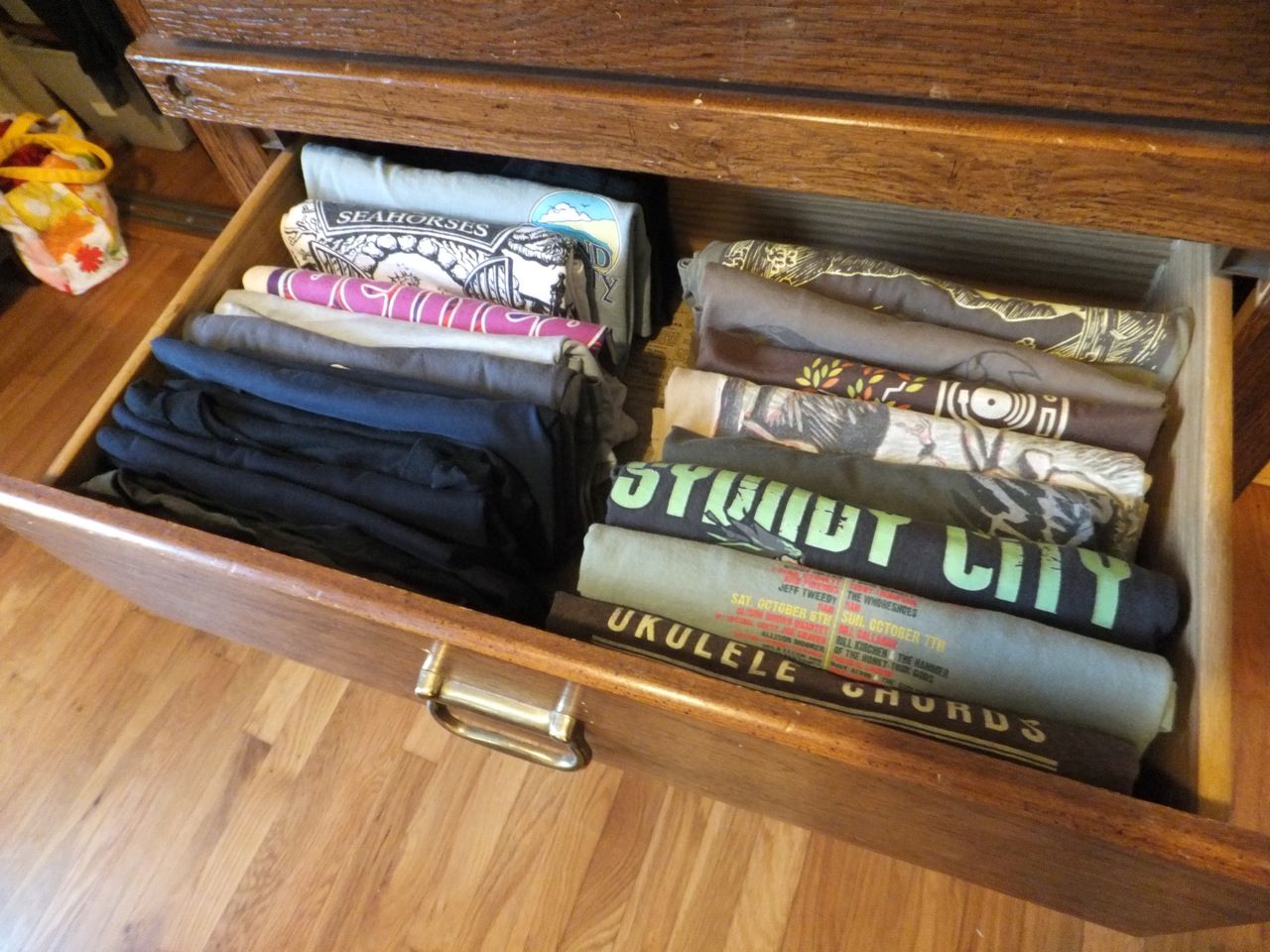

Articles
How To Store T-Shirts
Modified: January 19, 2024
Learn the best techniques and tips for storing your t-shirts and keeping them in perfect condition with our informative articles.
(Many of the links in this article redirect to a specific reviewed product. Your purchase of these products through affiliate links helps to generate commission for Storables.com, at no extra cost. Learn more)
Introduction
When it comes to storing your t-shirts, it’s important to do it right to keep them in good condition and easily accessible. Whether you have a small collection of favorite tees or a massive assortment, proper storage can help extend their lifespan and prevent unnecessary wear and tear. In this article, we will explore various methods of storing t-shirts and offer some tips on keeping them organized.
Properly storing your t-shirts not only helps maintain their quality but also saves you time and frustration when you’re trying to find that perfect shirt for your outfit. Imagine never having to untangle a mass of crumpled tees or dig through a messy drawer again!
So, let’s delve into the world of t-shirt storage and discover the best ways to keep your t-shirts neatly folded, easily visible, and in tip-top shape.
Key Takeaways:
- Properly storing your t-shirts, whether by folding and stacking, rolling, or hanging, can help maintain their quality, save space, and make it easy to find the perfect shirt for any occasion.
- Special and seasonal t-shirts require extra care in storage, from using acid-free archival boxes for preservation to rotating t-shirts based on the season to maximize wardrobe space and organization.
Read more: How To Store T-Shirts On Shelves
Sorting and Folding
Before you start storing your t-shirts, it’s helpful to sort them by category or color. This not only makes it easier to find a specific shirt but also adds a visually appealing element to your storage space. You can sort them by graphic tees, plain tees, or long-sleeved tees, or arrange them by color for a more aesthetically pleasing display.
Once you’ve sorted your t-shirts, it’s time to fold them. The folding method you choose will depend on personal preference, available storage space, and the type of t-shirts you have. Let’s explore a couple of popular folding methods:
- Fold and Stack Method: This is the most traditional and space-efficient method for folding t-shirts. Lay your shirt flat on a surface and fold it in half horizontally, with the sleeves aligned. Then, fold it in half vertically, bringing the bottom hem to meet the neckline. Now, you have a compact, rectangular shape that can be easily stacked.
- Rolling Method: Rolling your t-shirts is another great option, especially if you have limited drawer space. Lay your shirt flat and fold it vertically (as in the above method). Then, starting from the bottom, tightly roll your shirt up, creating a compact cylinder shape. This method is not only space-saving but also helps to minimize wrinkles.
Whichever folding method you choose, make sure to keep the size of your storage space in mind. If you have ample shelf space, stacking folded shirts may be the best option. On the other hand, if you’re working with limited drawer space, rolling your shirts can save space and make it easier to see all your options at a glance.
Once you’ve sorted and folded your t-shirts, it’s time to move on to the storing methods. Let’s discuss the pros and cons of hanging and folding your t-shirts.
Hanging vs. Folding
When it comes to storing t-shirts, one of the first decisions you’ll need to make is whether to hang them or fold them. Both methods have their advantages and it ultimately depends on personal preference and the available space you have.
Hanging: Hanging your t-shirts can be a great option if you have enough closet space and want to keep your shirts easily visible and accessible. Here are some benefits of hanging:
- Promotes Wrinkle-Free Appearance: Hanging t-shirts can help minimize wrinkles, as they are not tightly folded and compressed.
- Easier to Browse: Hanging your shirts allows you to easily see and browse through your collection, making it convenient to choose your outfit for the day.
- Organized Display: A neatly hung t-shirt collection can add a visually pleasing element to your closet or wardrobe.
However, hanging may not be the best option for certain types of t-shirts, such as those made from delicate fabrics or with embellishments, which can get damaged or misshapen on hangers. Additionally, it may take up more space compared to folding, especially if you have a large number of t-shirts.
Folding: Folding your t-shirts is a classic and space-efficient method that works well for most types of t-shirts. Here are some advantages of folding:
- Space-Saving: Folding t-shirts allows you to maximize your storage space, especially if you have limited closet or drawer space.
- Protection for Delicate Fabrics: Folding keeps delicate fabrics safe from stretching or getting snagged on hangers.
- Easily Accessed: Stacking folded shirts in drawers or on shelves makes it easy to see and grab the one you want without disturbing others.
Ultimately, the decision between hanging and folding comes down to your personal preference and the space you have available. You can also employ a combination of both methods depending on the types of t-shirts you have. Now, let’s explore different storing methods for both folded and hung t-shirts.
Fold and Stack Method
The fold and stack method is a classic and efficient way to store your folded t-shirts. It is particularly useful when you have limited space or want to easily see all your shirts at once. Here’s how to use the fold and stack method:
- Start by folding your t-shirt in half horizontally, bringing the bottom hem up to meet the neckline.
- Then, fold it in half vertically, aligning the sleeves with the bottom hem.
- You should now have a compact rectangular shape. Place it vertically in your storage space, such as a drawer or shelf.
- Repeat this folding process for all your t-shirts, stacking them one on top of the other.
- Make sure to align the edges and straighten the stack to keep it neat and organized.
When using the fold and stack method, it’s important to be mindful of the height of your stack. If the stack becomes too tall, it may become unstable and prone to toppling over. To avoid this, consider creating multiple smaller stacks or using dividers to separate different categories of t-shirts.
Another tip to keep in mind is to rotate the stack periodically. By rotating the bottom t-shirt to the top, you can ensure that all your t-shirts receive equal wear and prevent the bottom ones from becoming forgotten or developing creases from being pressed against other shirts for an extended period of time.
The fold and stack method works well for most types of t-shirts and is especially suited for organizing t-shirts in drawers. It allows for easy visibility and access to your entire collection, and you can quickly find the shirt you’re looking for without disturbing the other shirts in the stack.
However, keep in mind that this method may not be ideal for t-shirts made from delicate fabrics or with intricate designs, as they may be prone to creasing or distortion when folded for an extended period. For such t-shirts, you may want to consider alternative storing methods, such as hanging or using protective garment bags.
Now that we have covered the fold and stack method, let’s move on to discussing drawer organization techniques to further streamline and optimize your t-shirt storage.
Drawer Organization
Drawer organization is key to keeping your folded t-shirts neat, accessible, and easy to find. With a well-organized drawer, you can quickly grab the shirt you want without rummaging through a messy pile. Here are a few tips for organizing your t-shirt drawer:
- Divide by Category: Consider dividing your drawer into sections for different categories or types of t-shirts. For example, you can have separate sections for plain tees, graphic tees, or long-sleeved tees. This makes it easier to locate specific shirts and keeps them neatly grouped together.
- Use Drawer Organizers: Drawer organizers are incredibly useful for keeping your t-shirts neatly separated and preventing them from becoming a jumbled mess. You can use dividers or small storage bins that perfectly fit your drawer dimensions. These organizers allow you to create designated spaces for each stack of folded t-shirts.
- Arrange by Color: If you prefer a visually appealing drawer, consider organizing your t-shirts by color. Arrange them from light to dark or use a rainbow order. This not only looks visually pleasing but also helps you quickly find the color you’re looking for.
- Label or Tag: To further enhance organization, you can label or tag each section of your drawer based on the t-shirt category or color. This adds a visual cue and makes it even easier to locate specific shirts.
- Utilize Vertical Space: If you have a deep drawer, consider utilizing the vertical space by using dividers or small shelf inserts. This allows you to create multiple layers of stacks, maximizing storage capacity while keeping everything visible and accessible.
By implementing these drawer organization techniques, you can significantly improve the efficiency of your t-shirt storage. No more digging through a tangled mess of shirts or struggling to find the one you want. With a well-organized drawer, you can easily maintain a tidy and easily accessible collection of folded t-shirts.
Now that you have mastered the art of organizing your t-shirt drawer, let’s explore other storing methods, starting with the rolling method.
To store t-shirts, fold them neatly and stack them vertically in a drawer or on a shelf to prevent wrinkles and make it easy to see and access each shirt.
Read more: How To Store T-Shirts Without Wrinkling
Rolling Method
The rolling method is an alternative to the traditional fold and stack method for storing your t-shirts. It is particularly useful if you have limited drawer space or prefer a more compact and space-saving storage solution. Rolling your t-shirts not only saves space but also helps prevent wrinkles and makes it easier to see all your options at a glance. Here’s how to utilize the rolling method:
- Lay your t-shirt flat: Start by laying your t-shirt face-down on a flat surface, such as a clean table or bed.
- Fold the sleeves: Fold the sleeves towards the center, ensuring they are aligned with the side seams of the shirt.
- Fold the bottom hem: Fold the bottom hem of the shirt about one-third of the way towards the center.
- Start rolling: Starting from the bottom, tightly roll the t-shirt up towards the neckline. Make sure to keep the edges aligned and the roll tight to prevent it from unraveling.
- Continue rolling: Once you reach the neckline, adjust the roll if needed to ensure it’s tight and secure. You should now have a compact cylinder-shaped t-shirt roll.
Repeat this process for each t-shirt you want to store. Once you have rolled all your t-shirts, you can arrange them vertically in your drawer. This allows you to easily see and access each shirt without having to disturb the others. The rolling method is especially convenient if you have a large number of t-shirts or if you’re traveling and want to maximize space in your suitcase or backpack.
Additionally, the rolling method helps to prevent wrinkles on your t-shirts. Since the fabric is not tightly folded and compressed, there are fewer creases and folds that can cause wrinkling. This makes it ideal for t-shirts made from delicate fabrics that are prone to creasing easily. Rolling also helps prevent the edges of the t-shirts from becoming misshapen over time, as they are not subjected to the same pressure as when folded.
However, keep in mind that the rolling method may not be suitable for t-shirts with large graphics or prints, as they may become distorted or cracked when tightly rolled. It may also be more challenging to see the specific design on each rolled t-shirt, so it’s best to reserve this method for plain or solid-colored shirts.
Now that you’ve learned the rolling method, let’s explore another storing option: the hanging method.
Hanging Method
The hanging method is a popular choice for storing t-shirts, especially if you have ample closet space and want to keep your shirts easily visible and accessible. Hanging your t-shirts not only helps prevent wrinkles, but it also allows you to quickly browse and select the shirt you want without disturbing the others. Here’s how to effectively use the hanging method:
- Choose suitable hangers: Select hangers that are appropriate for t-shirts, such as plastic or wooden hangers. Avoid using wire hangers, as they can misshape the shirts and leave creases.
- Button or zip up: Before hanging your t-shirts, make sure to button them up or zip them to maintain their shape and prevent stretching.
- Align center: Hang your t-shirts by aligning the center of the shirt with the hook of the hanger. This ensures that the shirt hangs evenly and reduces the likelihood of stretching or misshaping the shoulders.
- Leave space between shirts: To prevent overcrowding, leave some space between each shirt on the hanger. This allows for airflow, reduces friction, and minimizes the risk of wrinkles.
- Organize by category or color: Consider organizing your hanging t-shirts by category, such as plain tees, graphic tees, or long-sleeved tees. Alternatively, you can also arrange them by color, from light to dark or in a specific color order. This makes it easier to find a specific shirt and adds a visually appealing element to your closet.
Hanging your t-shirts is particularly beneficial for materials that are prone to wrinkling, such as cotton or linen. By allowing the fabric to hang freely, you help maintain a wrinkle-free appearance and reduce the need for ironing or steaming. Additionally, the hanging method is ideal for those who want to showcase their t-shirt collection and create a visually pleasing display within their closet.
However, it’s important to note that the hanging method might not be suitable for all types of t-shirts. Delicate fabrics, shirts with beading or sequins, or those with stretchy materials may be better stored using the folding or rolling method to prevent damage or distortion. Additionally, hanging can take up more vertical space in your closet compared to other storing methods, so make sure you have enough hanging space available.
Now that you’ve learned about the hanging method, let’s move on to discuss storing special t-shirts, such as those with sentimental value or valuable collectibles.
Storing Special T-Shirts
Special t-shirts hold sentimental value or may be valuable collectibles that require extra care and attention when it comes to storage. Whether it’s a concert t-shirt, a sports jersey, or a limited edition design, here are some tips on how to properly store your special t-shirts:
- Use acid-free archival boxes: Acid-free archival boxes are designed to protect fabrics from deterioration caused by acidic materials. These boxes are available in various sizes and are perfect for storing special t-shirts. Make sure the box is large enough to accommodate the t-shirt without excessive folding or compression.
- Wrap in acid-free tissue paper: Before placing the t-shirt in the box, consider wrapping it in acid-free tissue paper. This adds an extra layer of protection and helps prevent any potential damage from contact with the box.
- Avoid plastic bags: Avoid storing special t-shirts in plastic bags, as they can trap moisture and promote the growth of mold or mildew. Plastic can also cause the fabric to degrade over time. Opt for breathable materials like acid-free boxes or cotton storage bags.
- Keep away from direct sunlight: Special t-shirts, especially those with vibrant colors or delicate prints, should be stored away from direct sunlight. Prolonged exposure to sunlight can cause fading or discoloration.
- Consider climate-controlled storage: If you live in an area with extreme temperatures or high humidity, consider storing your special t-shirts in a climate-controlled space. This helps maintain a stable environment and prevents damage caused by fluctuating conditions.
- Label and document: It’s a good practice to label each box or storage container with details about the t-shirts inside. This makes it easier to locate specific shirts without having to open multiple boxes. Additionally, documenting your collection, either through photographs or a detailed inventory, can help keep track of valuable or sentimental pieces.
By following these tips, you can ensure that your special t-shirts remain in excellent condition and are preserved for years to come. Taking extra precautions when it comes to storage is essential for maintaining the quality and value of these cherished garments.
Now, let’s move on to discuss storing seasonal t-shirts, which can help you optimize your wardrobe throughout the year.
Storing Seasonal T-Shirts
Storing seasonal t-shirts is a smart way to maximize your wardrobe space and keep your closet organized throughout the year. By rotating your t-shirts based on the season, you can free up valuable closet space and ensure that your clothing is easily accessible and appropriate for the current weather. Here are some tips for storing seasonal t-shirts:
- Sort by season: Start by sorting your t-shirts into different piles based on their suitability for each season. This will help you determine which shirts to store and which ones to keep readily available.
- Clean and prepare: Before storing your seasonal t-shirts, make sure they are properly cleaned. Launder or dry clean them according to the care instructions to remove any stains, odors, or dirt. This will prevent any unwanted odors or stains from setting in during storage.
- Choose appropriate storage containers: Select storage containers that are suitable for the specific needs of your t-shirts. For example, breathable fabric or plastic storage bins can help protect your t-shirts from dust and pests while allowing airflow to prevent moisture buildup.
- Fold or roll: Depending on the storage space available, you can choose to either fold or roll your seasonal t-shirts. Folding allows for easy stacking in storage bins, while rolling can save space and minimize wrinkles.
- Label the containers: To easily identify which seasonal t-shirts are stored in each container, label them accordingly. This will save you time and effort when it’s time to switch out your wardrobe for the next season.
- Store in a cool and dry place: It’s important to store your seasonal t-shirts in a cool and dry environment to prevent moisture, mold, or mildew damage. Avoid areas with direct sunlight or high humidity, as they can cause fabric discoloration or deterioration.
- Use cedar or lavender sachets: To deter pests and keep your stored t-shirts fresh, consider placing cedar or lavender sachets in the storage containers. These natural repellents can help protect your garments from moths and add a pleasant scent.
By properly storing your seasonal t-shirts, you can preserve their quality and make the most of your closet space. When the season changes, simply swap out the stored t-shirts with the ones that are currently in season, creating a seamless transition in your wardrobe throughout the year.
Now that you’ve learned how to store seasonal t-shirts, let’s conclude our article with a summary of the key points we’ve covered.
Read more: How To Store T-Shirts In Closet
Conclusion
Properly storing your t-shirts is essential for maintaining their quality, organizing your closet, and easily accessing the shirts you desire. Whether you choose to fold and stack, roll, or hang your t-shirts, each method has its benefits and considerations. Sorting your t-shirts by category or color adds an extra level of organization and visual appeal.
For those who prefer a more traditional approach, folding and stacking t-shirts allows for compact storage and easy visibility. Utilizing drawer organizers and dividing the drawer by category or color can further optimize your t-shirt storage. Rolling your t-shirts is a convenient alternative, especially for those with limited drawer space, as it saves space, minimizes wrinkles, and provides a quick overview of your collection.
For those with ample closet space, hanging t-shirts can be a visually appealing option. However, it’s important to ensure you use appropriate hangers and leave enough space between shirts to prevent wrinkling and stretching.
When it comes to special t-shirts with sentimental value or collectible status, storing them in acid-free archival boxes with acid-free tissue paper provides the necessary protection to preserve their condition. On the other hand, seasonal t-shirts can be efficiently stored in containers, labeled for easy identification, and stored in a cool and dry place until needed.
In conclusion, finding the right storing method for your t-shirts depends on factors such as available space, fabric type, and personal preference. By implementing the tips outlined in this article, you can keep your t-shirts in excellent condition, save valuable storage space, and easily find the perfect shirt for any occasion.
So, take the time to organize and store your t-shirts properly, and enjoy a clutter-free closet with neatly folded or hung t-shirts that are ready to wear at a moment’s notice. With the right storage techniques, you can ensure your t-shirts stay fresh, wrinkle-free, and accessible, keeping you stylish and organized every day!
Frequently Asked Questions about How To Store T-Shirts
Was this page helpful?
At Storables.com, we guarantee accurate and reliable information. Our content, validated by Expert Board Contributors, is crafted following stringent Editorial Policies. We're committed to providing you with well-researched, expert-backed insights for all your informational needs.


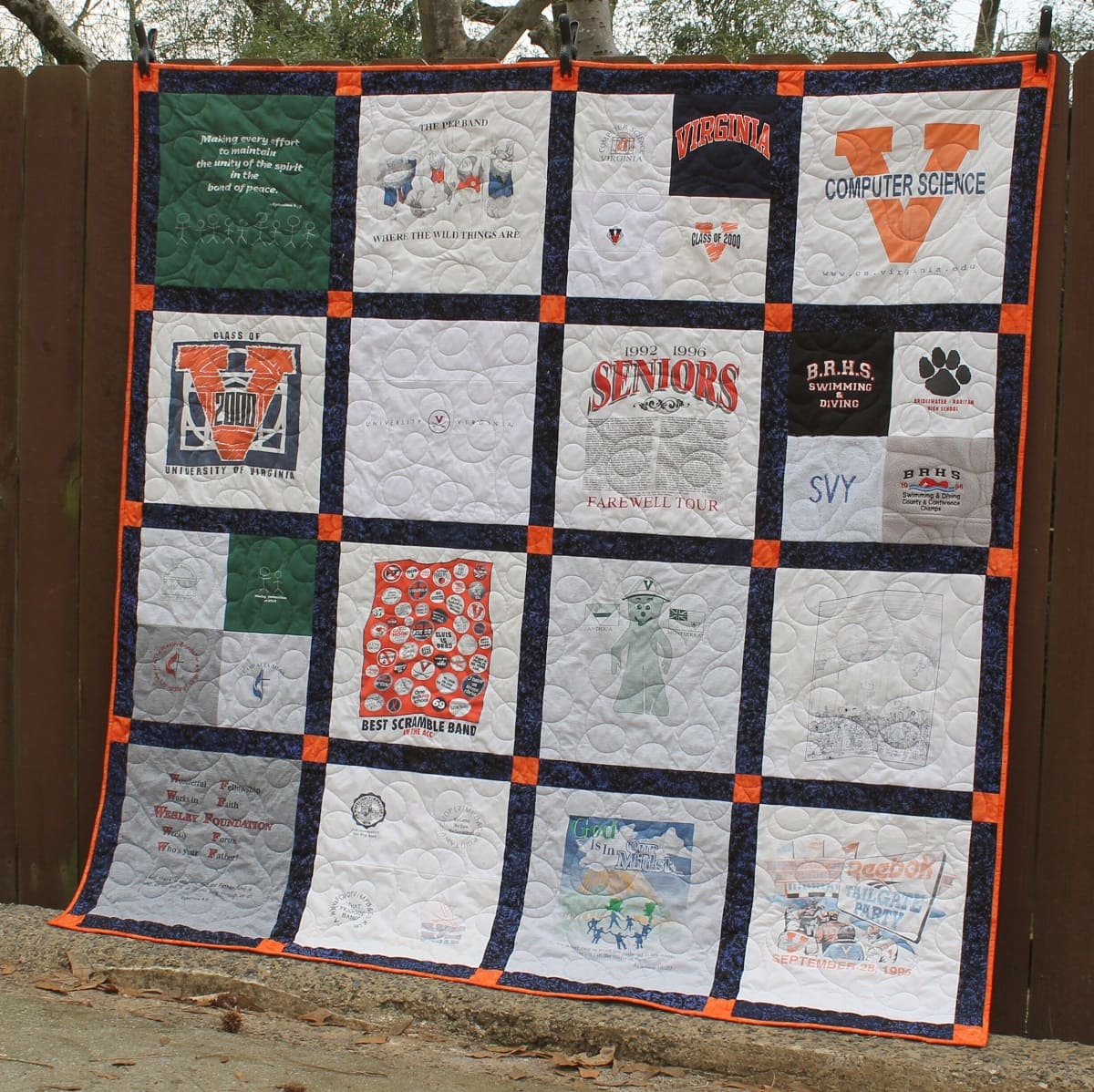

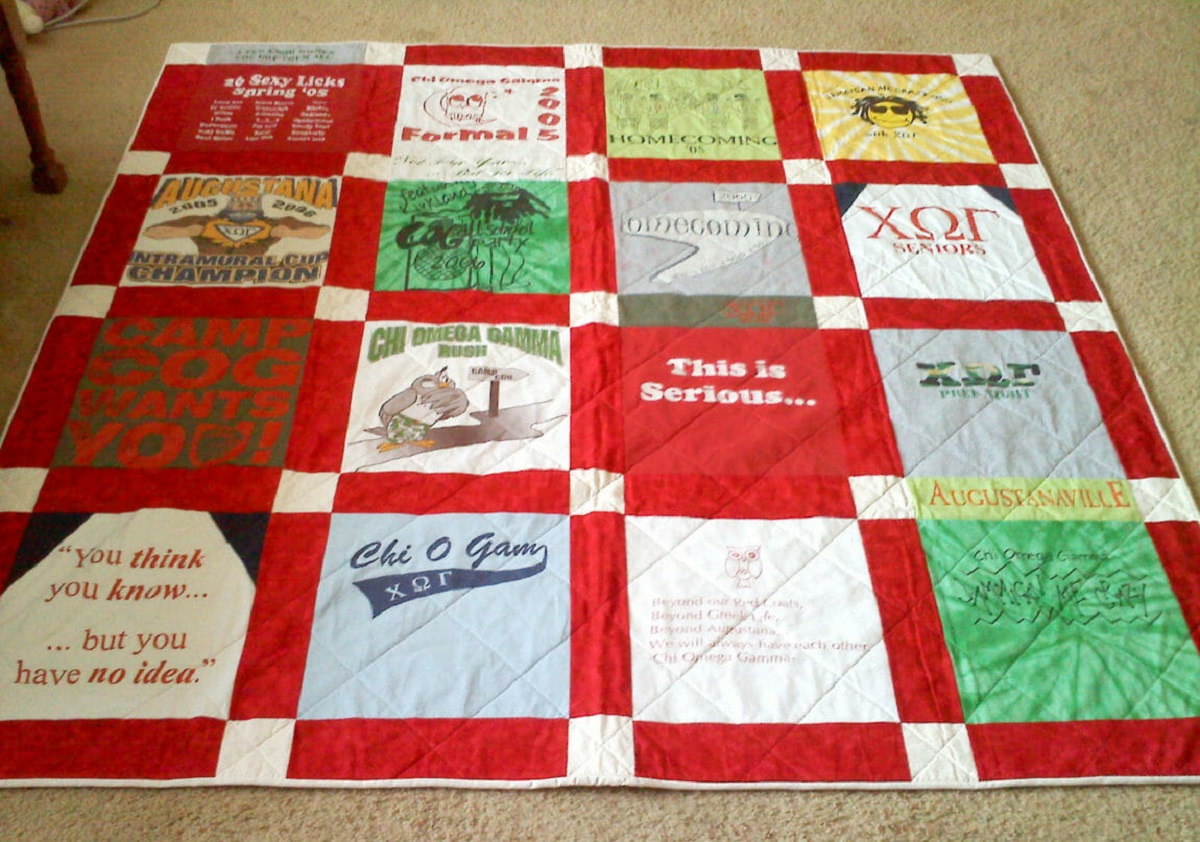


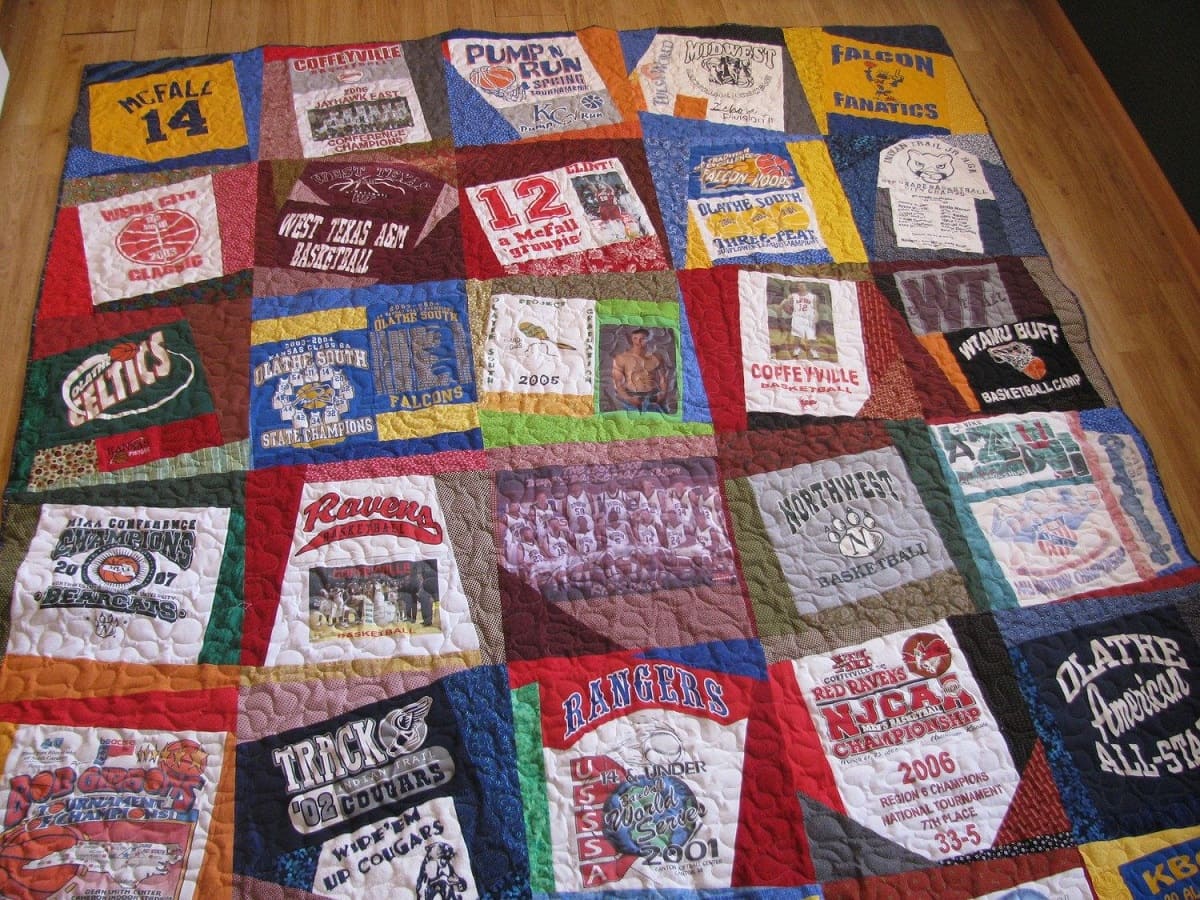
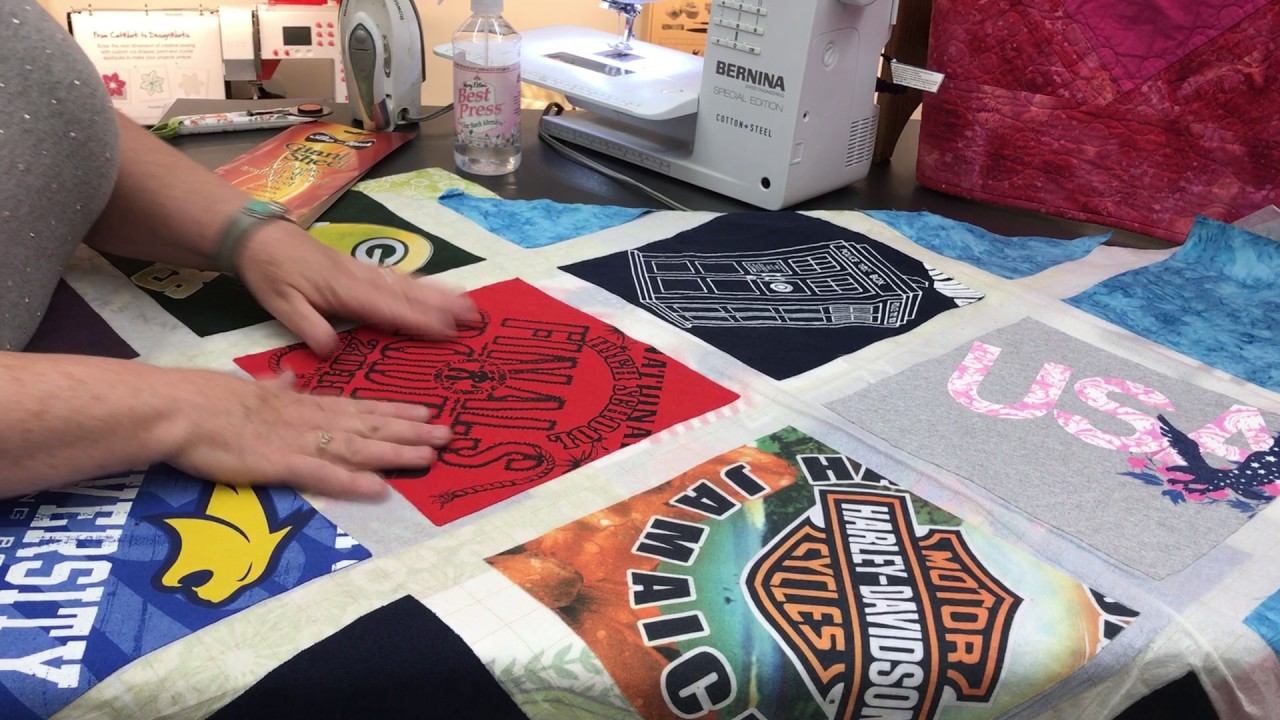


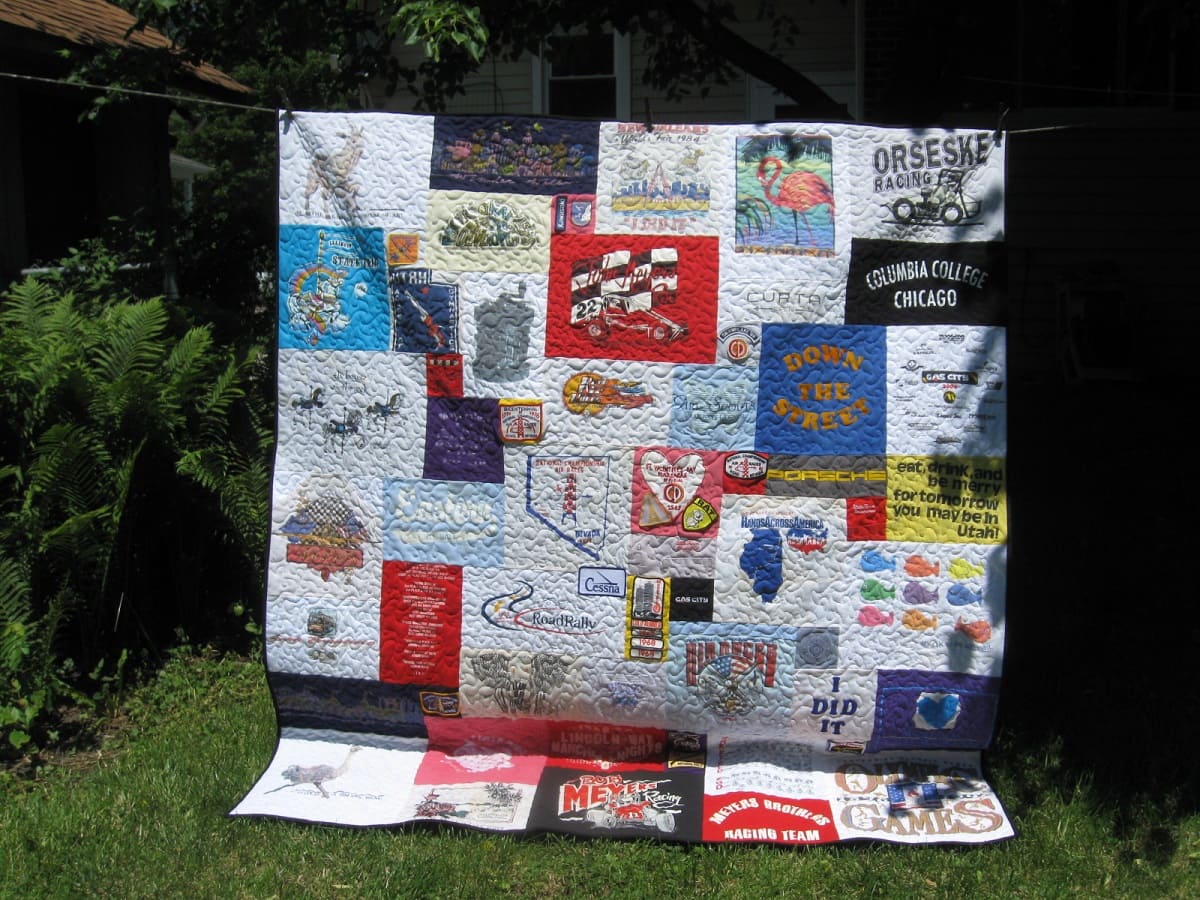
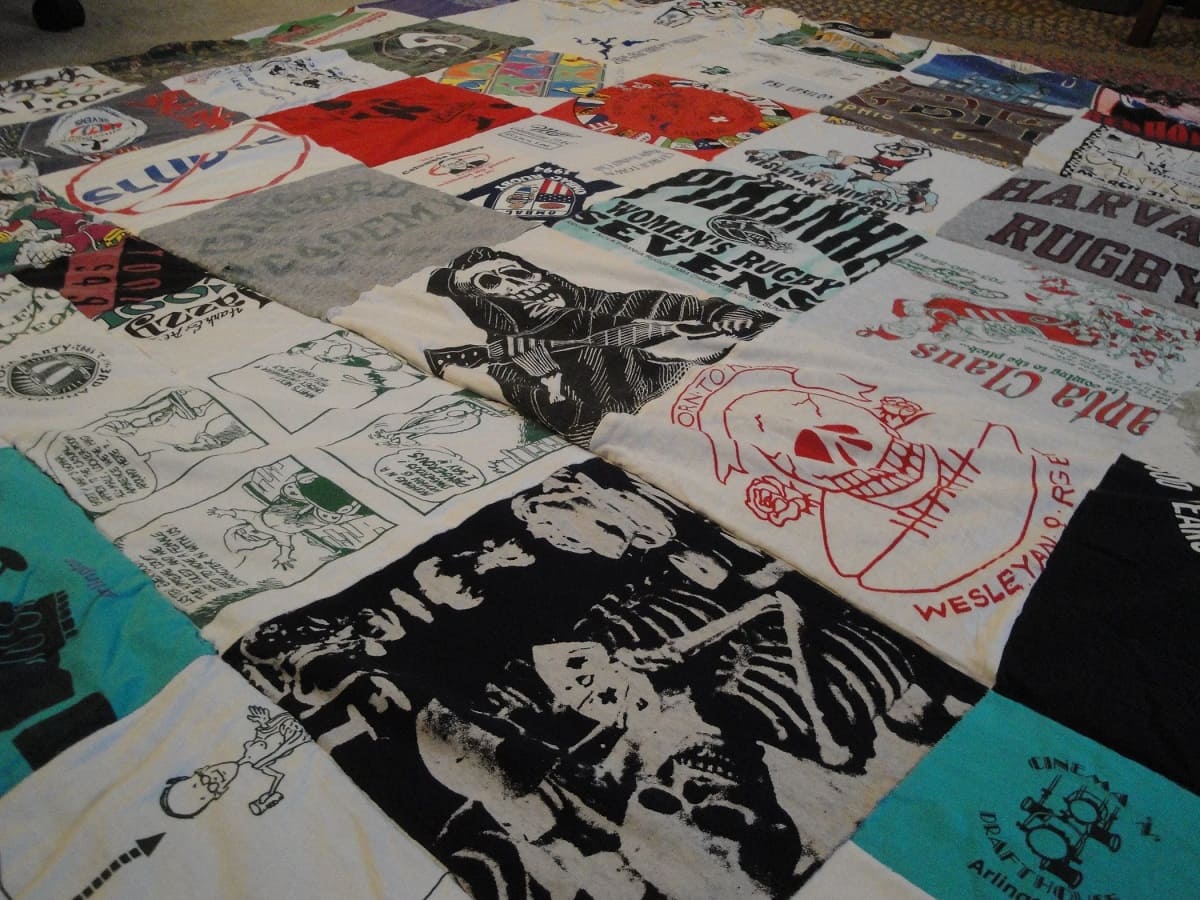

0 thoughts on “How To Store T-Shirts”